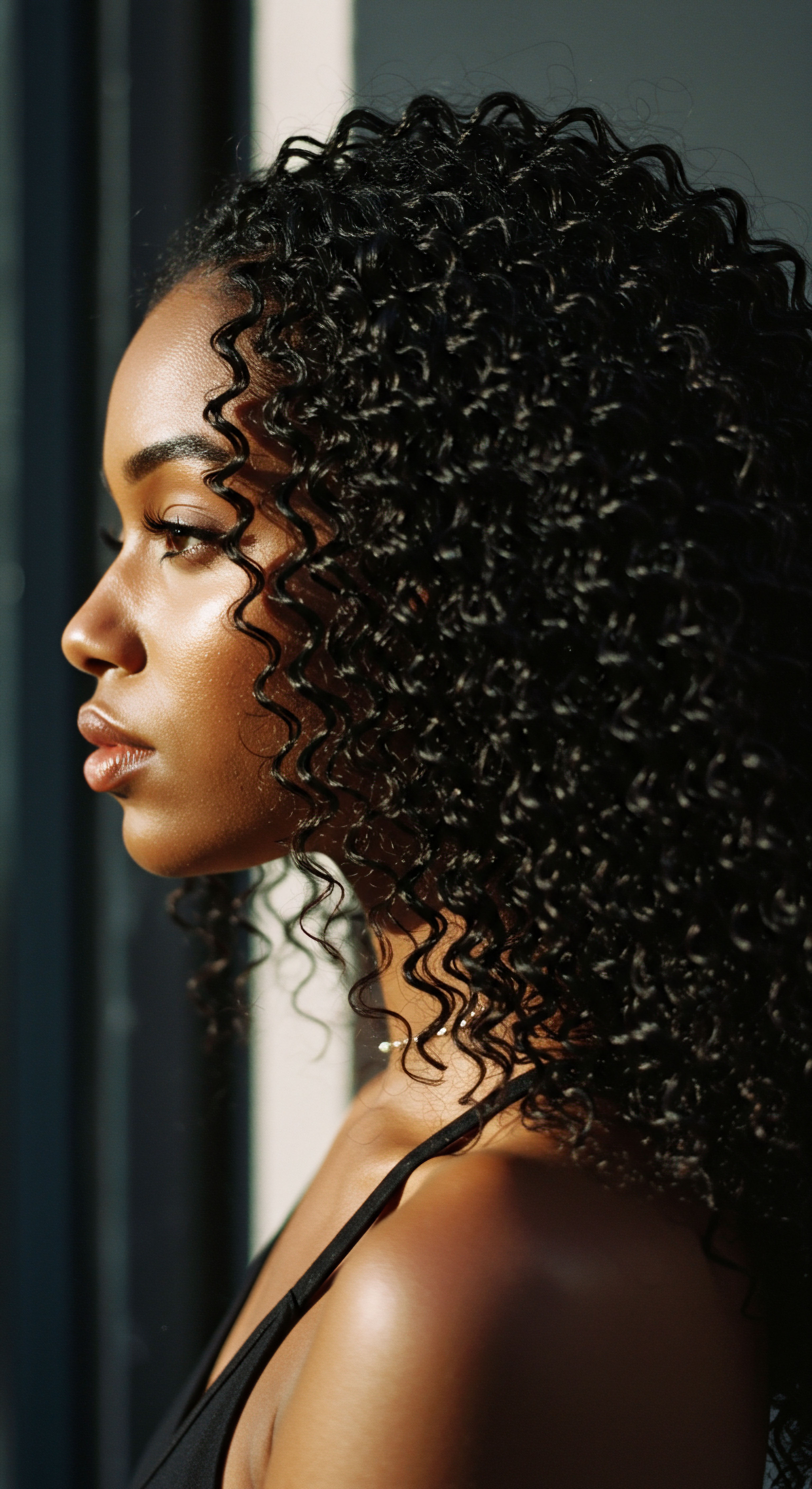
Roots
The journey of hair, particularly textured hair, extends far beyond the surface of a strand. It delves into the very core of identity, echoing through generations, shaped by societal whispers and the quiet strength of personal resolve. How deeply do these external pressures truly reach, influencing not only our choices in hair care but the quiet chambers of our inner world? This exploration begins with understanding the very essence of textured hair, its foundational structure, and the historical currents that have sculpted its perception and the practices surrounding it.
For centuries, hair has served as a powerful symbol, a visible marker of status, heritage, and belonging. For those with coils, kinks, and waves, this connection runs especially deep. The anatomy of textured hair, with its distinctive elliptical follicle shape and varied curl patterns, contributes to its unique characteristics, such as its propensity for dryness and its incredible versatility. Understanding these intrinsic qualities forms the first step toward a care approach that truly honors its nature.
The very structure of textured hair holds a deep, quiet wisdom, speaking to a legacy of adaptation and strength.

Hair Anatomy and Physiology Specific to Textured Hair
The science behind textured hair begins beneath the scalp. Unlike straight hair, which emerges from a round follicle, coily and curly strands originate from follicles that are typically oval or elliptical in shape. This unique follicular structure causes the hair shaft to grow in a helical, or spiral, manner.
The more pronounced the oval, the tighter the curl pattern. This helical growth path creates natural points of weakness along the hair shaft where the cuticle layers are raised, making textured hair more susceptible to breakage and moisture loss.
Moreover, the distribution of disulfide bonds, which provide hair with its strength and shape, varies across different hair types. In textured hair, these bonds are not evenly distributed, contributing to the hair’s characteristic curl but also influencing its resilience. The natural oils, or sebum, produced by the scalp, often struggle to travel down the spiraling shaft of textured hair, leading to dryness at the ends and a need for external moisturizing practices.
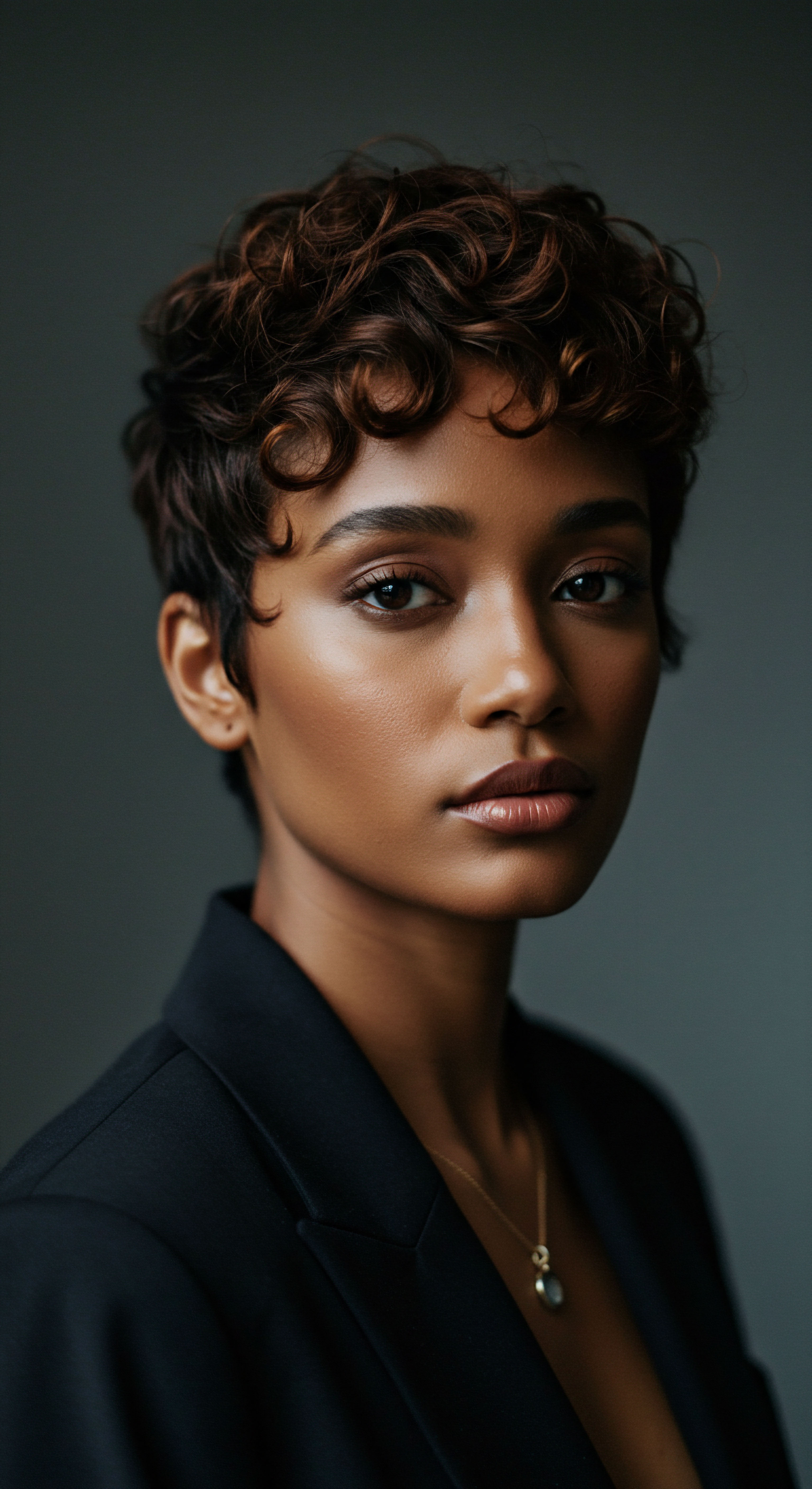
Understanding the Hair Strand
A single hair strand comprises three main layers ❉
- Cuticle ❉ The outermost layer, made of overlapping, scale-like cells that protect the inner cortex. In textured hair, these scales tend to be more lifted, allowing moisture to escape and making the hair feel rough if not properly conditioned.
- Cortex ❉ The middle layer, composed of keratin proteins, giving hair its strength, elasticity, and color. The arrangement of keratin bundles within the cortex contributes to the curl pattern.
- Medulla ❉ The innermost layer, often absent in finer hair types, but present in many textured strands. Its precise function is not fully understood, though it may play a role in hair strength.
The intricate dance between these layers dictates how hair responds to products, environmental factors, and styling techniques.

Textured Hair Classification Systems
For many, hair typing systems provide a language for understanding their unique curl patterns. While no system fully captures the vast diversity of textured hair, they offer a useful starting point for identifying general characteristics and tailoring care. The most widely recognized system categorizes hair into types 1 (straight), 2 (wavy), 3 (curly), and 4 (coily), with sub-classifications (A, B, C) indicating increasing tightness of the curl.
For instance, Type 4C Hair exhibits the tightest curl pattern, often appearing as densely packed zig-zags that shrink significantly when dry. This type is particularly prone to dryness and requires gentle handling. Conversely, Type 3A Curls are typically looser, wider spirals that may retain more moisture. These classifications, while helpful, should serve as guides rather than rigid boxes, as individual hair can possess multiple curl patterns.
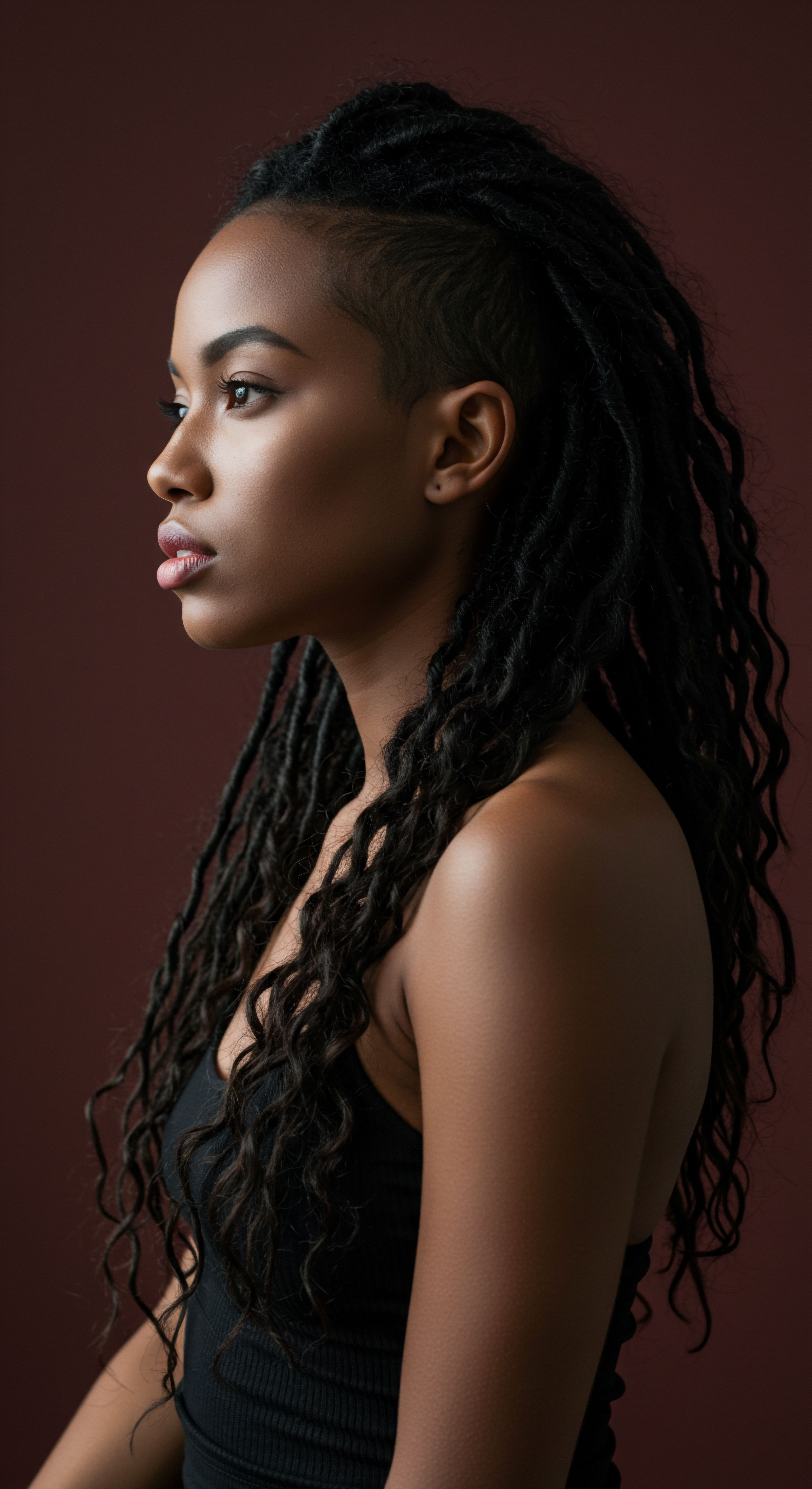
The Essential Lexicon of Textured Hair
A specialized vocabulary has blossomed around textured hair care, reflecting its distinct needs and practices. Terms such as “co-wash,” “pre-poo,” “deep condition,” “detangle,” and “protective styling” are not merely jargon; they represent specific approaches to cleansing, moisturizing, and safeguarding textured strands.
For instance, a Co-Wash refers to washing hair with conditioner only, a practice that minimizes stripping natural oils from already dry hair. A Pre-Poo involves applying an oil or treatment before shampooing to offer a protective barrier. These terms reflect a shift towards methods that honor the hair’s natural state and prevent damage often associated with traditional hair care routines designed for straighter textures.
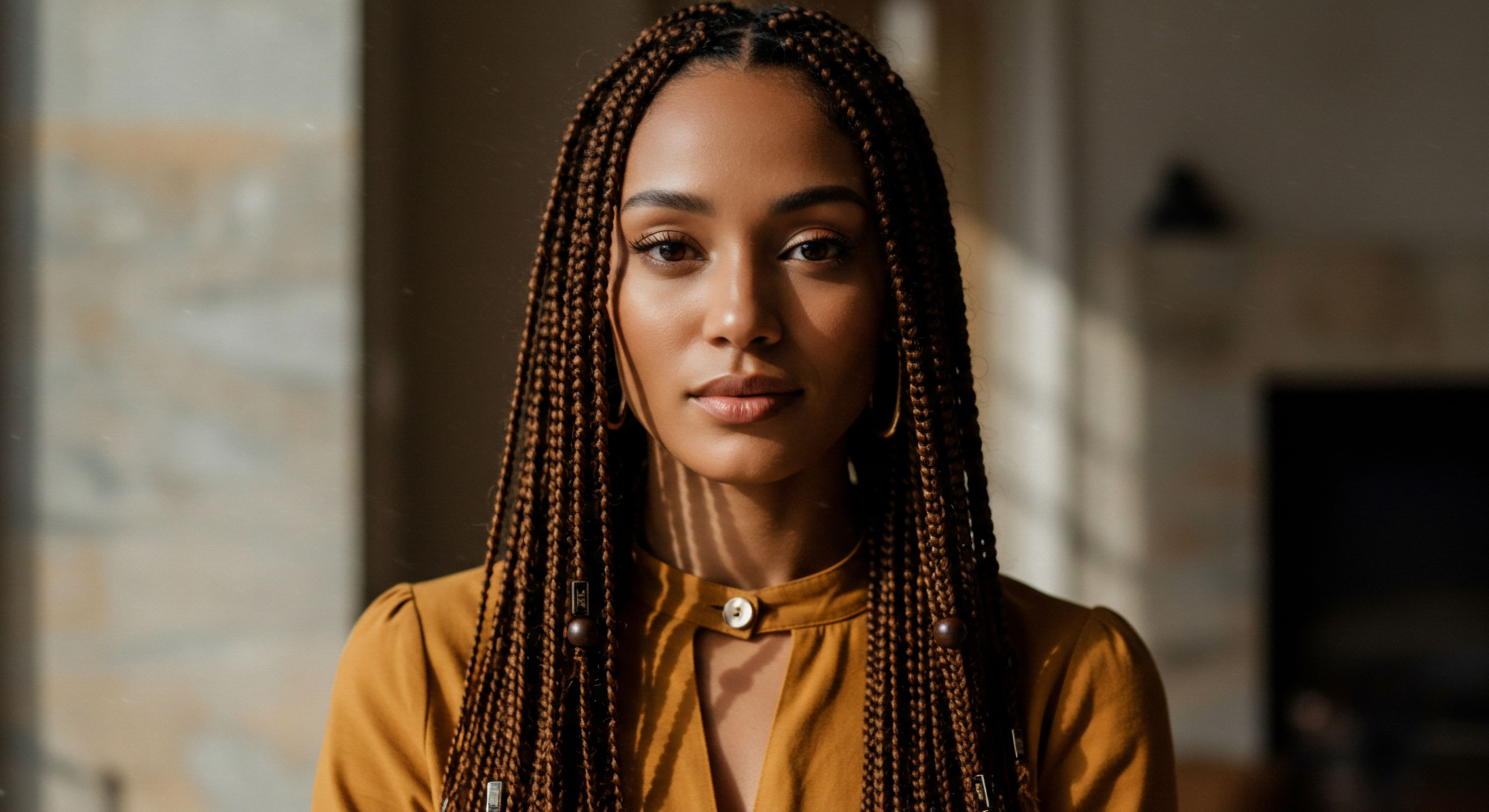
Hair Growth Cycles and Influencing Factors
Hair growth follows a cyclical pattern, moving through distinct phases ❉ anagen (growth), catagen (transition), and telogen (resting/shedding). The length of the anagen phase determines how long hair can grow. While these cycles are universal, various factors can influence their duration and the overall health of hair, especially textured hair.
Diet, stress, hormonal changes, and genetics all play a part. For textured hair, mechanical manipulation—from styling, detangling, or even friction against surfaces—can shorten the anagen phase or cause premature breakage, leading to perceived slower growth. Understanding these cycles allows for a more patient and informed approach to hair health, recognizing that growth is a continuous, delicate process.
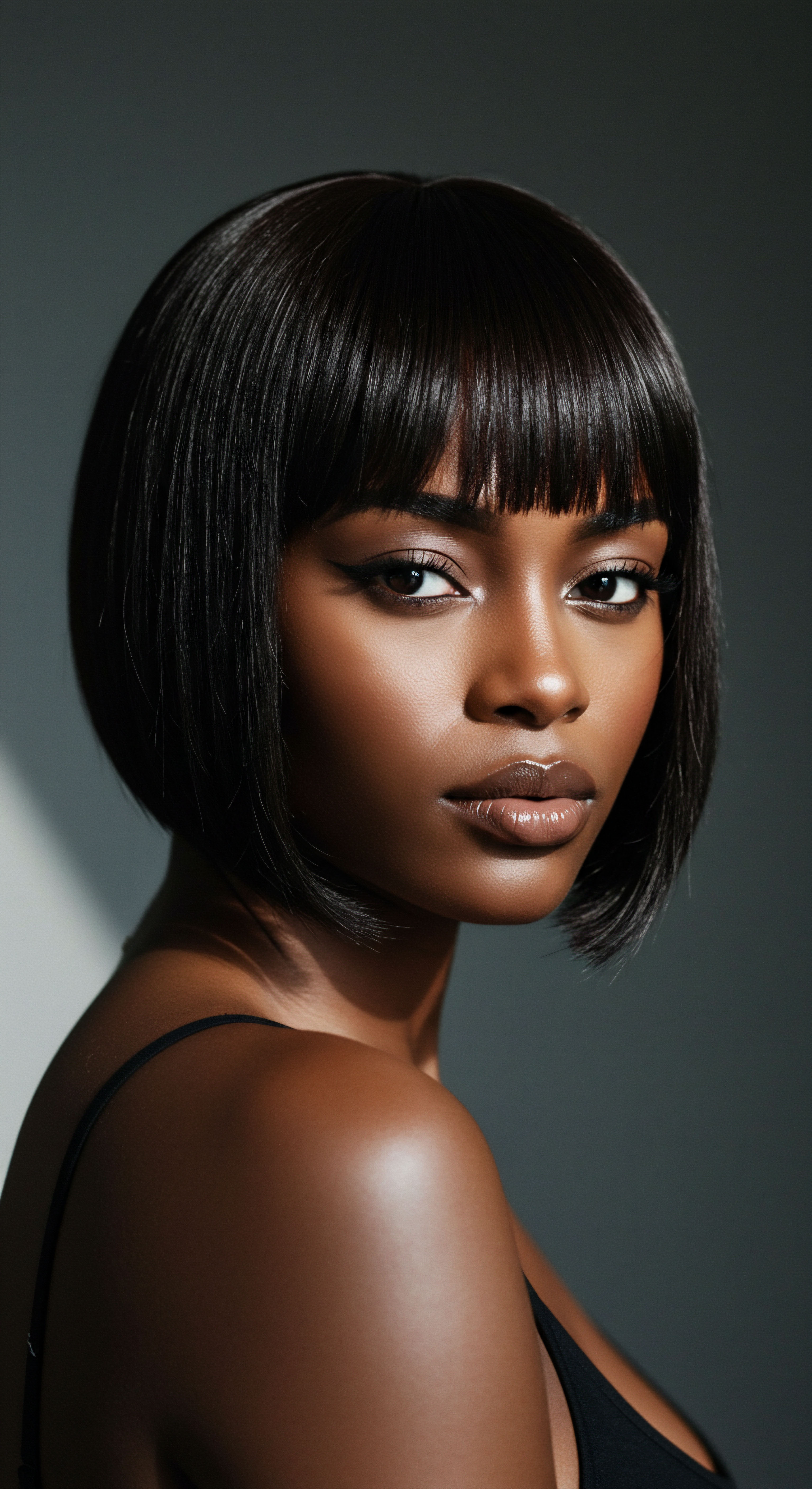
Ritual
Stepping beyond the foundational understanding of hair’s intrinsic nature, we arrive at the realm of daily practice and intentional ceremony. How do the rhythms of our lives, the very routines we adopt for our hair, become intertwined with the pervasive expectations of society? This section invites us into the practical wisdom of textured hair care, exploring the techniques and tools that transform strands, while also gently questioning the underlying motivations that sometimes guide our choices. It is here, in the quiet moments of wash day or the focused preparation for a protective style, that the personal and the societal often meet.
The deliberate acts of cleansing, conditioning, and styling textured hair are more than mere chores; they are rituals. These rituals can be deeply personal, a quiet conversation with one’s self and one’s heritage, or they can become a performance, subtly shaped by external gazes and beauty ideals. Navigating this space requires not only knowledge of techniques but also an attuned awareness of why we choose them.
Hair rituals are a dialogue, a quiet exchange between our inner landscape and the world’s outward expectations.
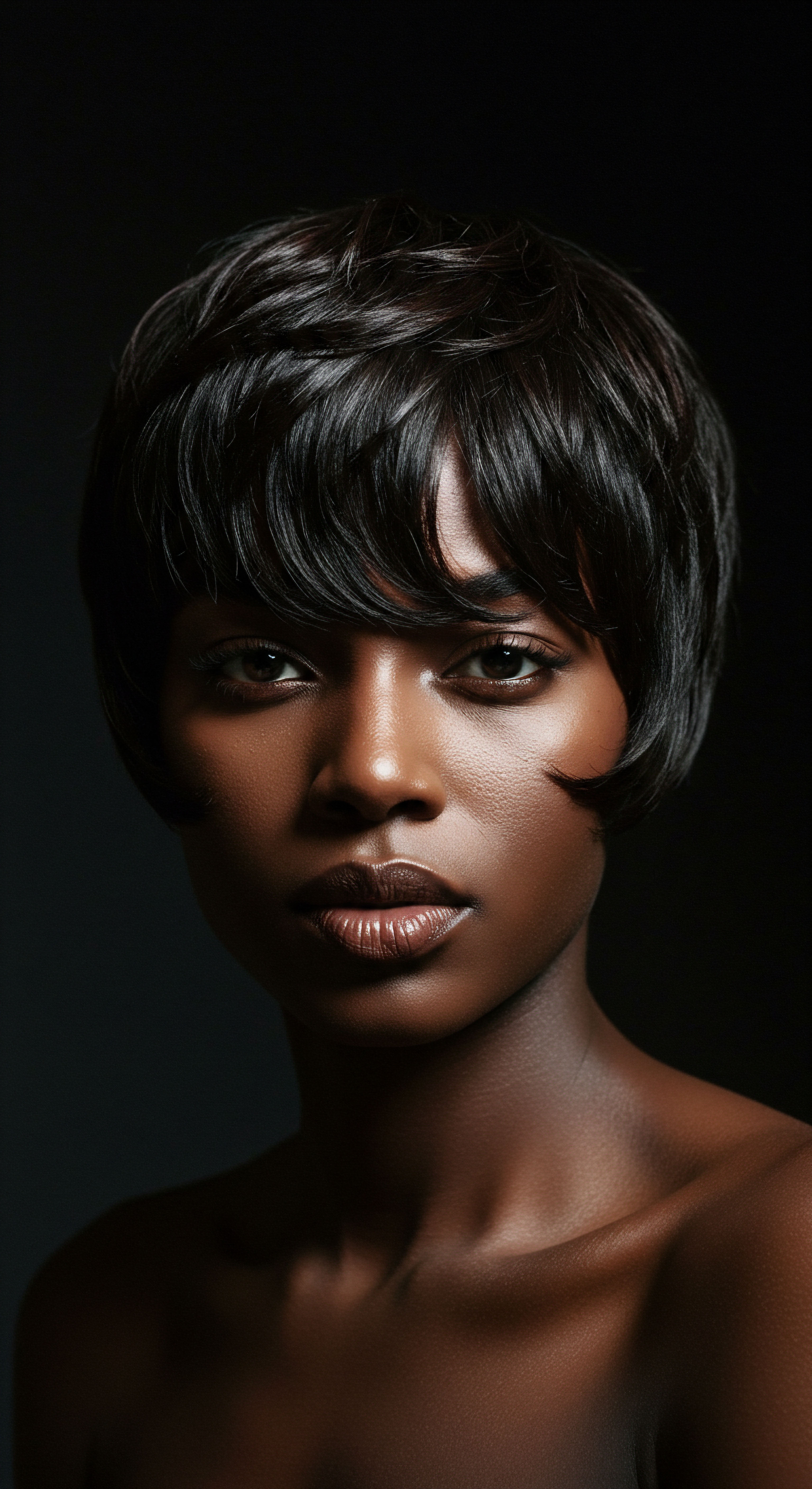
Protective Styling Encyclopedia
Protective styles, a cornerstone of textured hair care, shield delicate ends from environmental aggressors and daily manipulation, fostering length retention and overall hair health. These styles encapsulate a spectrum of techniques, each with its own history and application. From ancient African braiding traditions to modern twists and updos, they serve both a functional and an aesthetic purpose.
Consider the profound significance of Cornrows, a style with roots stretching back thousands of years across various African cultures. Beyond their visual appeal, cornrows served as markers of tribal identity, age, marital status, and even wealth. Today, they remain a versatile protective option, minimizing tangling and reducing the need for daily styling. Similarly, Box Braids offer a durable, long-term protective solution, allowing for extended periods of low manipulation.
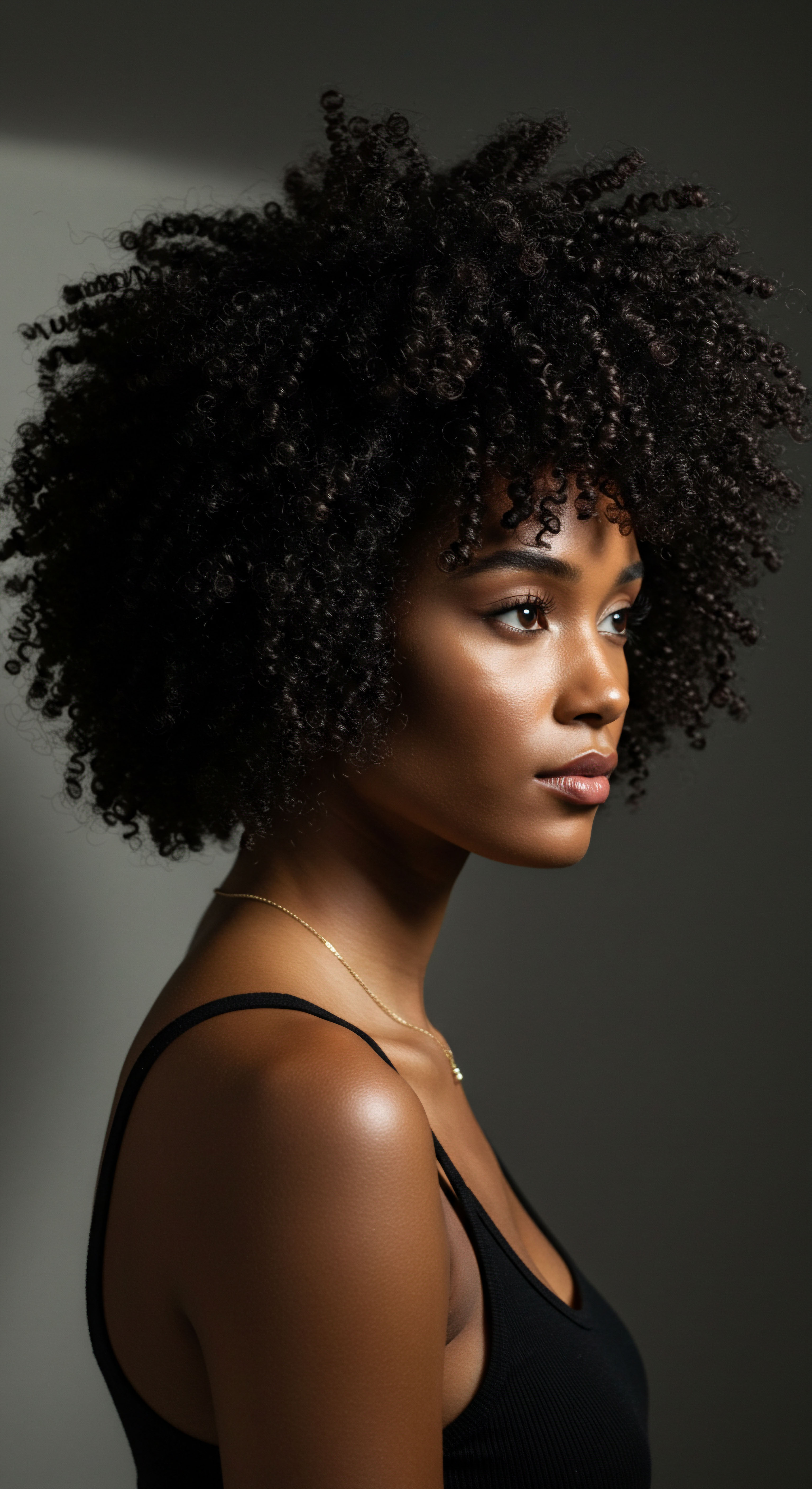
Choosing Your Protective Style
Selecting the right protective style involves a careful consideration of hair health, lifestyle, and the desired aesthetic.
- Hair Condition ❉ Ensure hair is healthy and moisturized before installing any protective style to avoid stress or breakage.
- Tension Management ❉ Styles should never be too tight, as excessive tension can lead to traction alopecia, a form of hair loss.
- Maintenance ❉ Even protective styles require care, including cleansing the scalp and moisturizing the hair underneath.
Proper installation and removal are equally vital to prevent damage, underscoring the importance of skilled hands or thorough self-education.
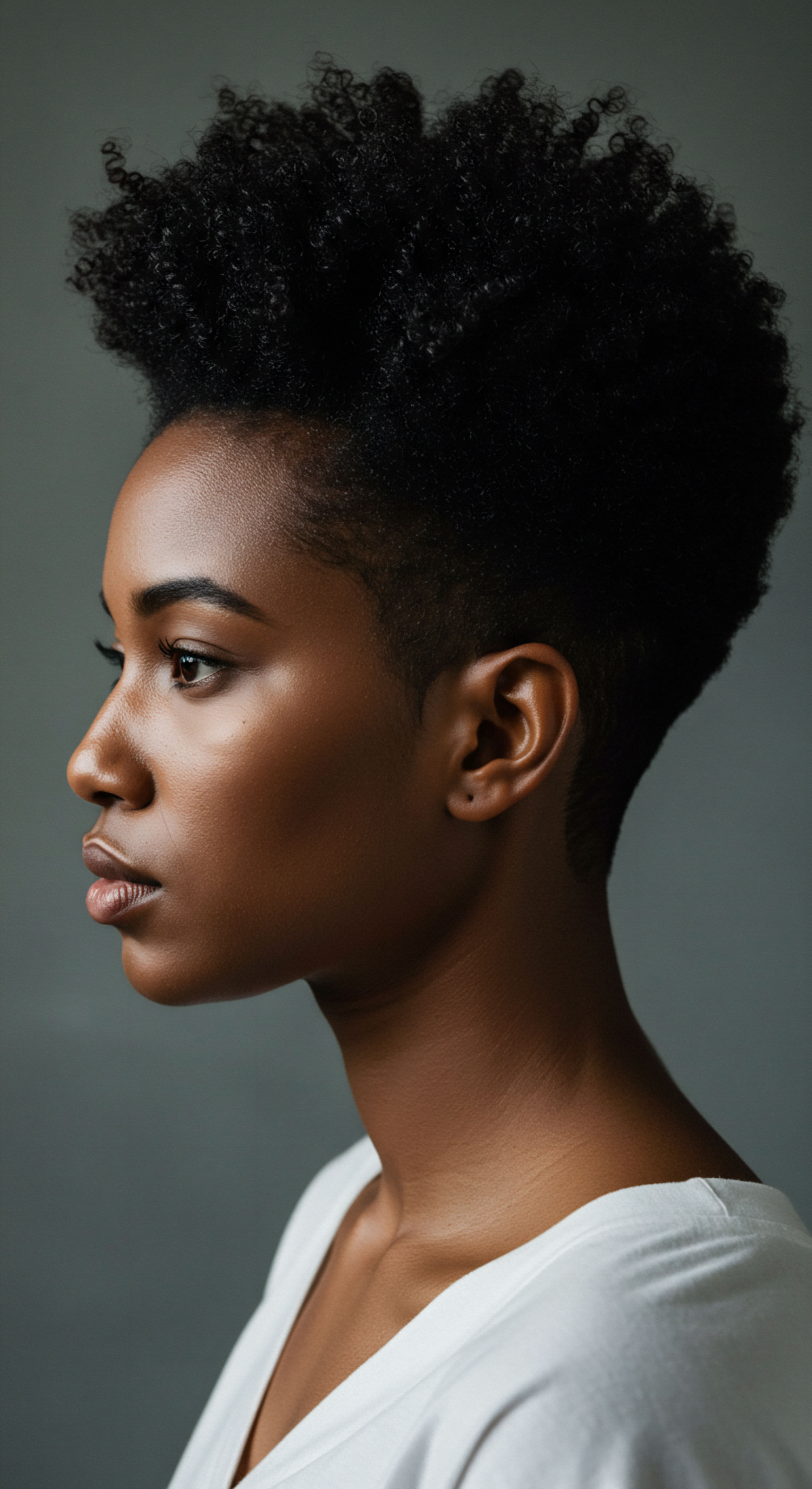
Natural Styling and Definition Techniques
Celebrating natural texture involves a range of techniques designed to enhance curl definition, volume, and shine. These methods often center on moisture retention and minimizing frizz, allowing the hair’s inherent pattern to truly come alive.
The Wash-And-Go, a seemingly simple style, actually involves a precise application of products to wet hair to encourage curl clumps. Techniques like the “shingling” method, where product is smoothed onto small sections of hair, or “raking,” where fingers act as a comb, help to separate and define individual curls. For those with tighter coils, a “twist-out” or “braid-out” offers stretched definition, providing a beautiful, elongated curl pattern without heat. Each technique offers a distinct expression of natural beauty, inviting a deeper connection with one’s hair.
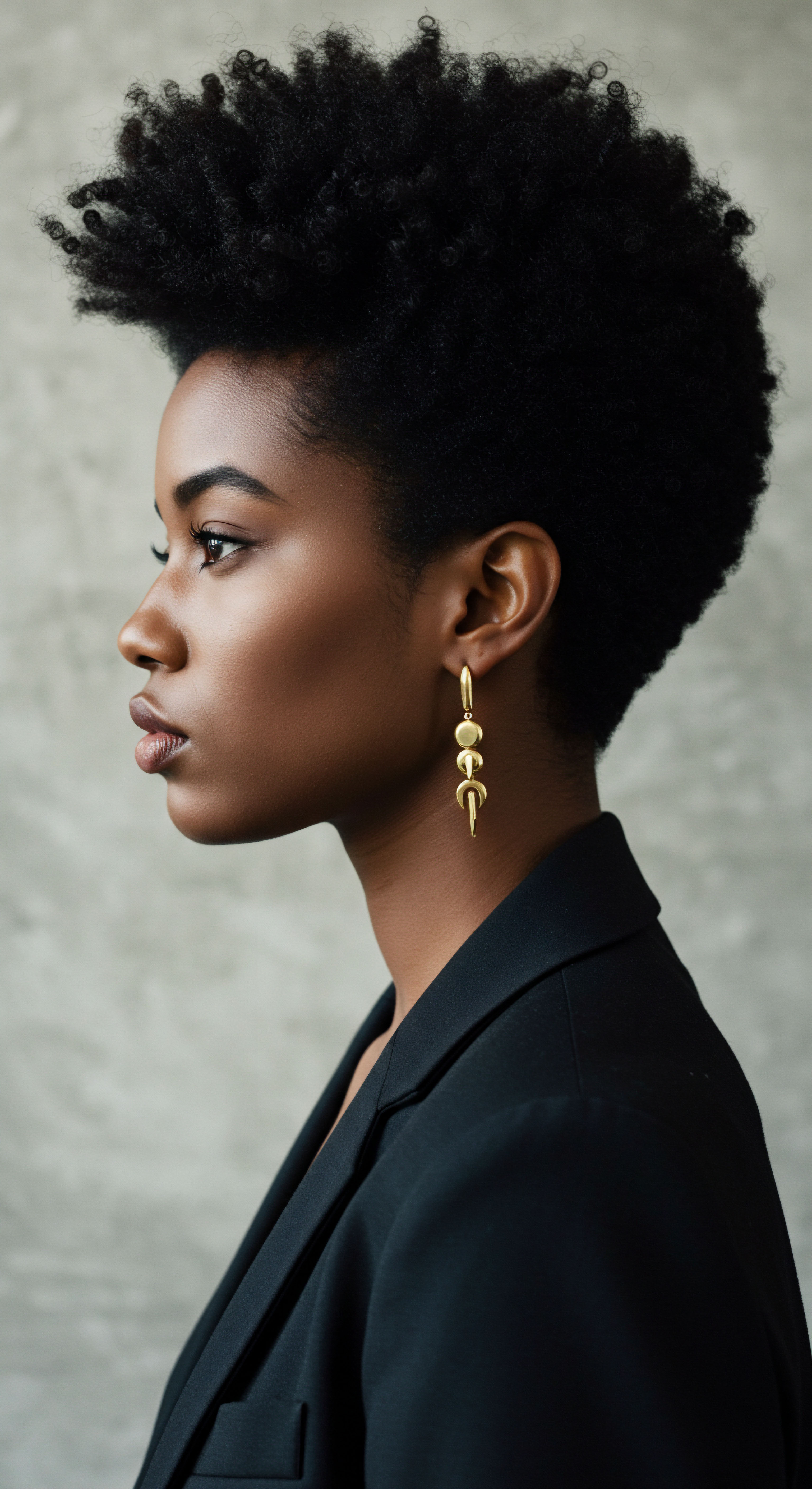
Wigs and Hair Extensions Mastery
Wigs and hair extensions offer incredible versatility and protective benefits, allowing for dramatic transformations or simply a break from daily styling. They can provide a canvas for self-expression, enabling individuals to experiment with colors, lengths, and textures without altering their natural hair.
From full wigs that offer complete coverage to sew-in wefts that add length and volume, the options are extensive. The art of wig and extension mastery lies in proper installation, secure attachment, and diligent care of both the added hair and the natural hair underneath. This often includes maintaining scalp hygiene, moisturizing braids or cornrows, and giving the natural hair periodic breaks from the added weight.

Heat Styling and Thermal Reconditioning
While Roothea champions natural texture, the reality of societal pressures often includes an expectation of straightened hair, particularly in professional or formal settings. Heat styling, such as blow-drying or flat-ironing, and chemical thermal reconditioning (relaxers) can achieve this. A safety-first approach is paramount when considering these methods.
Excessive or improper heat can cause irreversible damage to the hair’s protein structure, leading to dryness, breakage, and loss of curl pattern. When heat is applied, the hair’s internal bonds can be altered, and the cuticle can be lifted or cracked, compromising its integrity. Chemical relaxers, which permanently alter the hair’s disulfide bonds, carry even greater risks, including scalp burns and severe breakage if not applied by a trained professional. Understanding these risks is vital for informed choices.
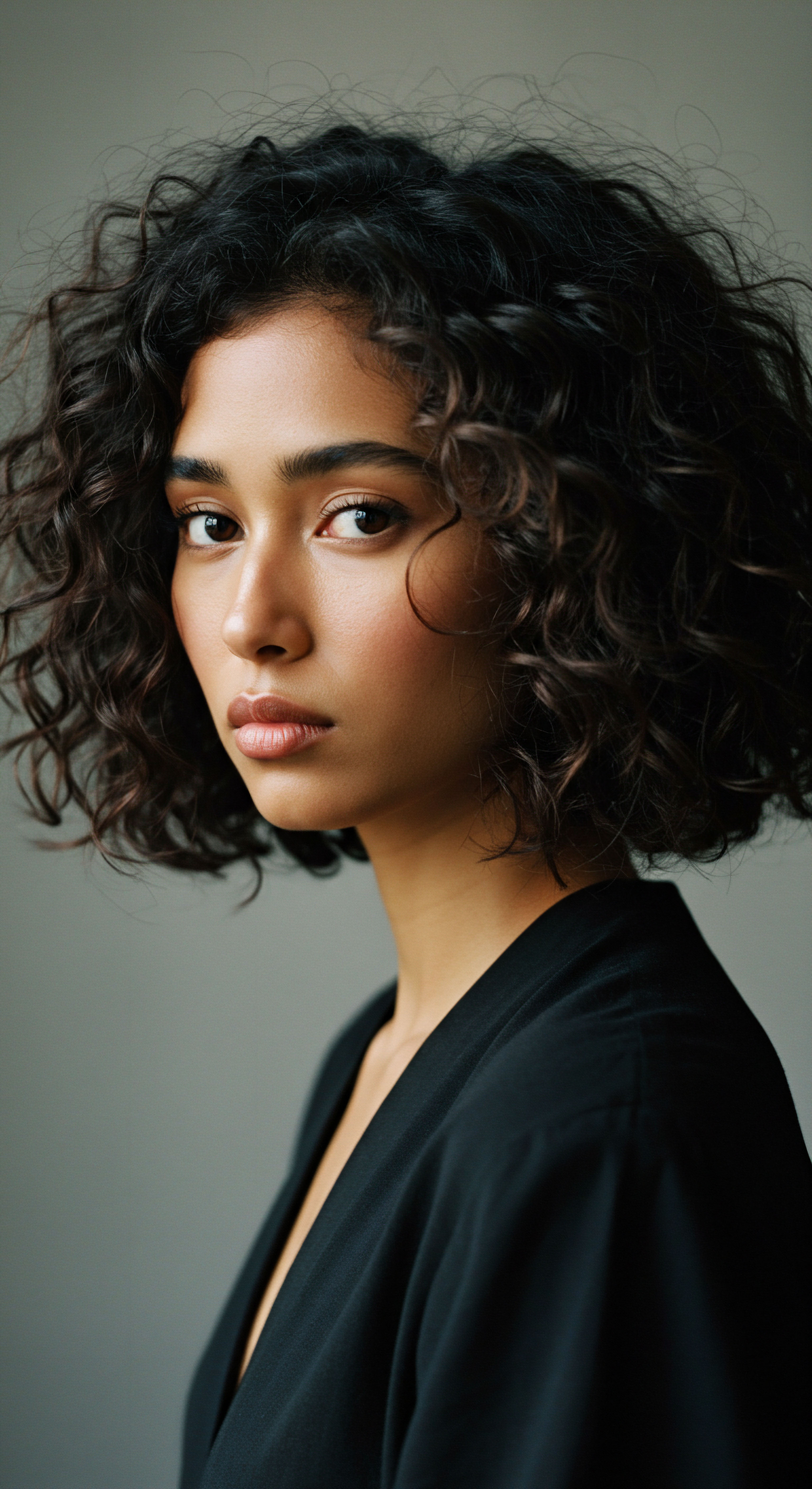
The Complete Textured Hair Toolkit
The right tools are indispensable for gentle and effective textured hair care. These are not merely accessories but extensions of careful practice, designed to minimize friction and maximize product distribution.
| Tool Wide-tooth comb |
| Purpose Detangling wet hair |
| Why It Matters Minimizes breakage by gently separating strands, reducing stress on the curl pattern. |
| Tool Denman brush |
| Purpose Curl definition and detangling |
| Why It Matters Helps to clump curls, distribute product evenly, and smooth the hair shaft for enhanced definition. |
| Tool Microfiber towel |
| Purpose Drying hair |
| Why It Matters Reduces frizz and minimizes friction compared to traditional terrycloth towels, preserving moisture. |
| Tool Spray bottle |
| Purpose Moisturizing and refreshing |
| Why It Matters Allows for even distribution of water or leave-in conditioner, reactivating curls without saturation. |
| Tool Selecting appropriate tools protects hair integrity and supports healthy styling. |
Investing in these tools represents a commitment to treating textured hair with the delicate attention it deserves, recognizing that its unique structure requires specialized care.

Relay
Having considered the intrinsic qualities of textured hair and the practices that nurture it, we now turn our gaze outward, to the broader societal currents that ceaselessly shape our choices and perceptions. How do the subtle yet insistent pressures of culture, media, and professional norms ripple through our lives, impacting not only the dollars we spend on hair care but the very foundation of our personal well-being? This section invites a deeper, more reflective examination, drawing upon research and cultural insights to uncover the complex interplay between external expectations and internal experiences. It is a space where the personal becomes political, and the act of caring for one’s hair takes on layers of meaning far beyond simple aesthetics.
The choices we make about our hair are rarely made in a vacuum. From childhood, we absorb messages about beauty, professionalism, and acceptability, often without conscious awareness. These messages, whether explicit or implied, carry significant weight, particularly for individuals with textured hair, whose natural styles have historically been marginalized or deemed “unprofessional” in dominant Western contexts. The desire to conform, to fit in, or to be perceived as “polished” can lead to considerable emotional and financial investments.
Societal expectations often create a silent contract, where hair choices become a negotiation between self-expression and external approval.

The Cost of Conformity and Self-Acceptance
The economic burden associated with maintaining hair to meet societal standards is a tangible reflection of these pressures. For Black women, this cost is often disproportionately high. A 2018 Nielsen report highlighted a striking disparity, indicating that Black consumers spent approximately nine times more on ethnic hair and beauty products than their non-Black counterparts. This figure, encompassing products, salon services, and styling tools, speaks to a market driven by both need and the desire to navigate prevailing beauty norms.
This elevated spending is not simply a matter of preference; it is frequently a response to the subtle and overt biases that textured hair faces in various spheres of life, from educational institutions to the workplace. The financial outlay extends beyond routine care, encompassing expenses for straightening treatments, wigs, or extensions that align with Eurocentric beauty ideals, often perceived as more “professional” or “presentable.” This constant negotiation can result in a significant financial drain, diverting resources that could otherwise contribute to other aspects of personal well-being or economic stability.

The Psychological Weight of Hair Bias
Beyond the financial implications, the psychological toll of societal hair pressures is profound. Research, such as the 2016 “Good Hair Study” by the Perception Institute, reveals that a majority of people, regardless of race, hold some implicit bias against Black women’s textured hair. The study found that white women, on average, explicitly rated textured hair as less beautiful, less sexy, and less professional than smooth hair. This pervasive bias translates into real-world consequences, with Black women experiencing higher levels of hair anxiety and perceiving social stigma against their natural styles.
This pressure can manifest in various ways, from being asked to change one’s hair for a job interview to facing microaggressions in daily interactions. A 2020 study by Duke University further solidified these findings, concluding that Black women with natural hairstyles were perceived as less professional, less competent, and less likely to be recommended for job interviews than candidates with straightened hair. Such experiences erode self-esteem and contribute to feelings of inadequacy, compelling individuals to invest in styles that offer a sense of safety and acceptance, even if they contradict personal preference or cause physical discomfort. The decision to straighten hair, for instance, can be a complex one, influenced by a desire for career advancement or social ease, despite the potential for heat damage or the health risks associated with chemical relaxers.

How Does Hair Bias Affect Career Trajectories?
The subtle biases against textured hair can have tangible effects on professional opportunities.
- Interview Disadvantage ❉ Candidates with natural hairstyles may receive lower ratings on professionalism and competence, impacting interview recommendations.
- Workplace Policies ❉ Black women are significantly more likely to be made aware of formal workplace appearance policies.
- Perceived Professionalism ❉ Textured hair is often perceived as less professional, leading to pressure to conform to Eurocentric beauty standards.
These biases create a climate where individuals might feel compelled to suppress their natural identity to navigate professional landscapes, impacting their authentic self-expression.
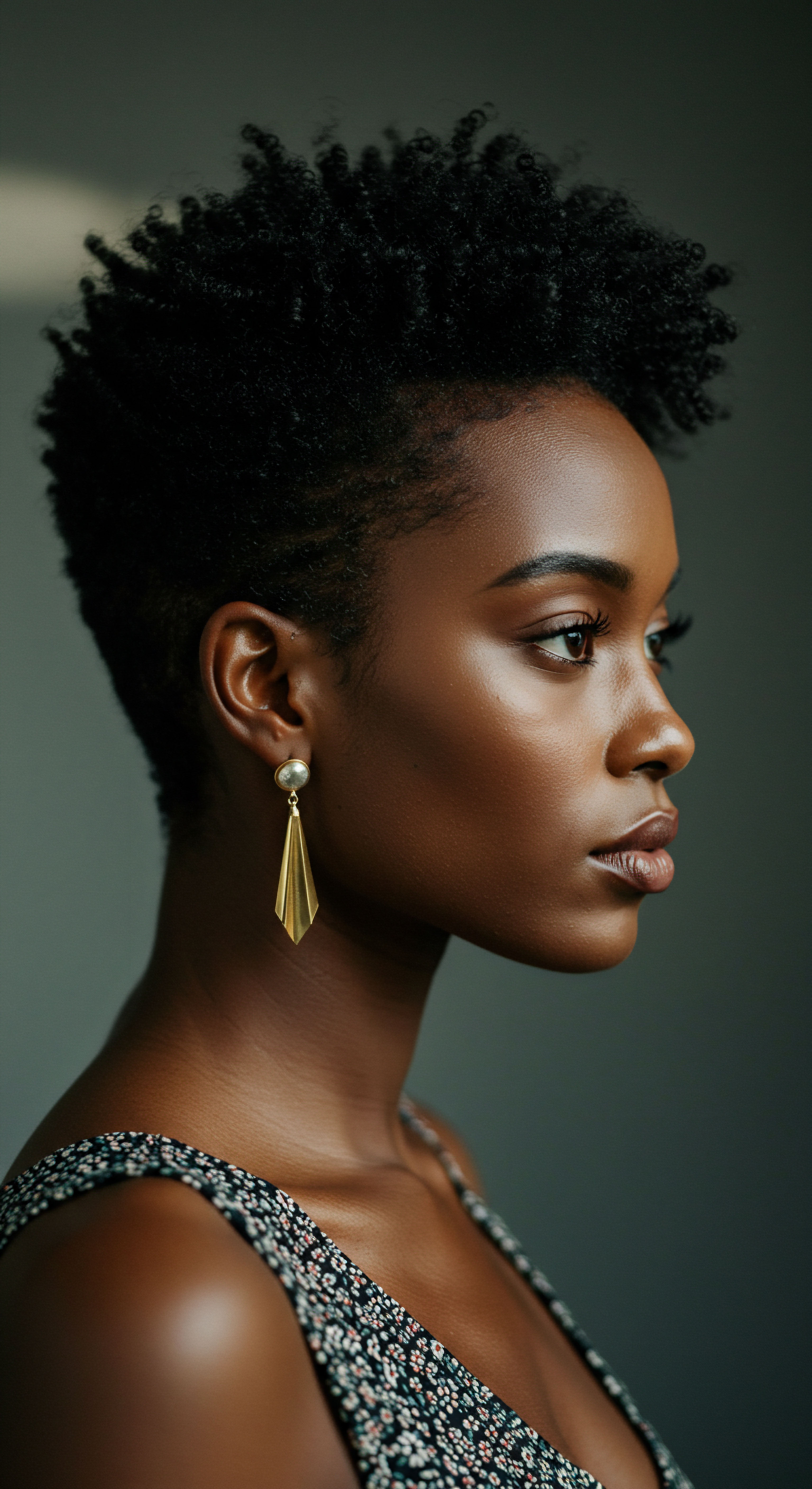
Cultural Heritage and the Modern Dilemma
For many with textured hair, particularly those of African descent, hair is deeply intertwined with cultural heritage and ancestral practices. Historical texts, such as “Hair Story ❉ Untangling the Roots of Black Hair in America” by Ayana Byrd and Lori Tharps, chronicle the profound significance of hair as a symbol of identity, resistance, and community throughout history. Traditional African hairstyles were not merely decorative; they communicated social status, spiritual beliefs, and tribal affiliations.
The modern dilemma arises when these rich cultural expressions collide with contemporary societal beauty standards. The pressure to assimilate, often driven by Eurocentric ideals propagated through media and mainstream culture, can lead to a disconnect from one’s natural hair and, by extension, one’s cultural roots. This internal conflict can manifest as stress, body dissatisfaction, and a diminished sense of well-being.
Reclaiming and celebrating natural hair, in this context, becomes an act of self-determination and cultural affirmation, a quiet rebellion against restrictive norms. It involves not only a shift in styling practices but a deeper psychological recalibration, embracing one’s inherent beauty.
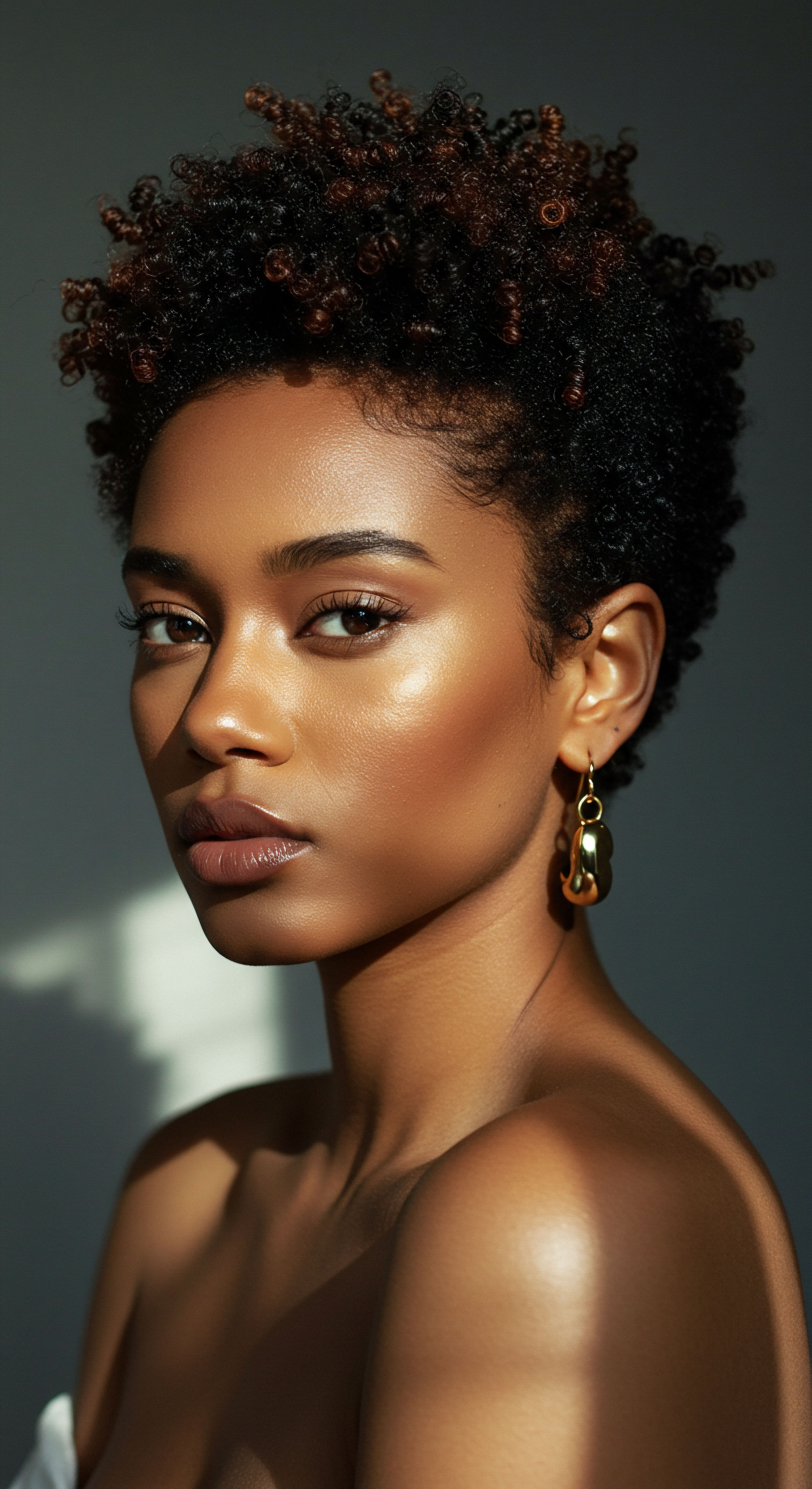
The Influence of Media and Marketing
Media representation plays a significant role in shaping perceptions of beauty and influencing hair care spending. Historically, mainstream media has underrepresented textured hair or portrayed it in ways that reinforce negative stereotypes, promoting a singular, often Eurocentric, ideal of beauty. This lack of diverse representation contributes to the feeling that natural textured hair is not “good” or “acceptable.”
Marketing strategies also play a part, often targeting insecurities or promoting products that promise to “tame” or “control” textured hair, rather than celebrating its unique qualities. This can lead to consumers purchasing an excess of products in pursuit of an elusive ideal, contributing to higher spending and potential frustration. However, a growing movement within the beauty industry, driven by consumer demand and advocacy, is pushing for more inclusive representation and products that cater specifically to the diverse needs of textured hair, shifting the narrative towards acceptance and celebration.
| Pressure Point Professional Standards |
| Hair Care Spending Impact Increased spending on straightening treatments, wigs, or specific "professional" styles. |
| Personal Well-Being Impact Anxiety, self-consciousness, feelings of inauthenticity, potential career limitations. |
| Pressure Point Media Beauty Ideals |
| Hair Care Spending Impact Purchase of products promising "smoothness" or "manageability" to fit narrow beauty norms. |
| Personal Well-Being Impact Body dissatisfaction, diminished self-esteem, disconnect from natural identity. |
| Pressure Point Social Acceptance |
| Hair Care Spending Impact Investment in styles perceived as more "acceptable" in social circles. |
| Personal Well-Being Impact Stress, pressure to conform, reduced self-expression, mental fatigue. |
| Pressure Point External expectations create both financial burdens and emotional strain for individuals with textured hair. |

Reflection
As we draw our exploration to a close, the threads connecting societal pressures, hair care spending, and personal well-being become clearer, revealing a landscape far richer and more intricate than a simple cosmetic choice. The journey of textured hair, from its inherent biological wonders to its deep cultural roots and the often-challenging modern societal gaze, is a testament to resilience, adaptation, and the enduring human spirit. It is a story of quiet negotiations and loud declarations, of dollars spent and identities affirmed.
The external world, with its subtle judgments and overt demands, undeniably shapes our relationship with our hair. Yet, within this dynamic, there lies an invitation ❉ an invitation to listen more closely to our own hair’s needs, to honor its natural rhythms, and to redefine beauty on our own terms. This shift is not merely about choosing a different product or style; it is about cultivating a deeper self-awareness, recognizing the societal forces at play, and consciously choosing paths that align with genuine well-being.
Ultimately, the aim is not to escape the world’s gaze entirely, for that is an impossible feat. Rather, it is to anchor oneself so firmly in self-acceptance and informed understanding that external pressures lose their power to diminish one’s intrinsic worth. The hair journey, in its quiet daily rituals and its broader cultural significance, becomes a mirror reflecting our capacity for self-love, a testament to the power of authenticity in a world that often asks for conformity. It is a continuous dance, one where each step, each product choice, each moment of self-care, contributes to a more harmonious existence.

References
- Byrd, Ayana D. and Tharps, Lori L. Hair Story ❉ Untangling the Roots of Black Hair in America. St. Martin’s Press, 2001.
- Nielsen. Black Impact ❉ Consumer Categories Where Black Consumers Show Their Strength. Nielsen, 2018.
- Perception Institute. The Good Hair Study Results. Perception Institute, 2016.
- Rosette, Ashleigh Shelby, and Koval, Christy Zhou. “Black Women with Natural Hairstyles Are Perceived as Less Professional and Less Competent.” Social Psychological and Personality Science, 2020.
- The CROWN Act. The 2019 CROWN Research Study for Women. The CROWN Act, 2019.
- Economic Policy Institute. The CROWN Act ❉ A jewel for combating racial discrimination in the workplace and classroom. Economic Policy Institute, 2023.